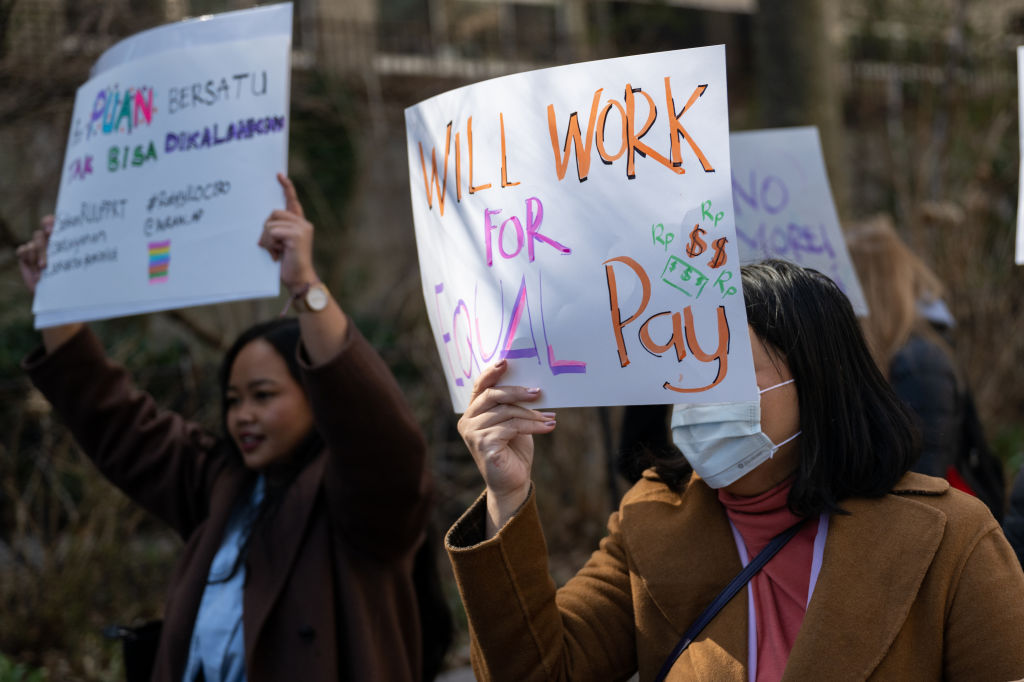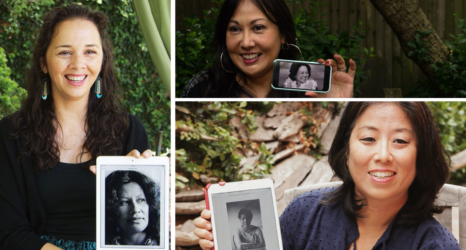
March 14 is date this year when U.S. working women finally reach the wages white men earned by the end of last year. And that’s only when all women are lumped together—Black women won’t meet white men’s last year wage benchmark until Sept. 21 (59 cents compared to white men’s $1), Hispanic women Oct. 8 (56 cents compared to white men’s $1), and Native women will have to wait until Nov. 30 (51 cents versus white men’s $1), according to a new Government Accountability Office report, “Women in the Workforce: Underrepresentation in Management Positions Persists, and the Gender Pay Gap Varies by Industry and Demographics.”
Twenty years ago, the wage difference between what U.S. women and men earn overall was 80 cents on the dollar. Now it’s 82 cents. Mighty poor progress.
On top of that, the problem with these figures is that the wage gap only includes wages. But earnings include a lot more than just wages. Other forms of compensation must be calculated in earnings: health insurance, retirement account contributions, bonuses and self-employment income. Once you factor in these other forms of earnings, men actually earn 75 percent more than women, according to the Stanford Center on Poverty and Inequality—meaning that women on average earn only 57 cents on a man’s dollar. A study by the Institute for Women’s Policy Research found an even greater gap when measuring total earnings, with women workers earning a mere 49 percent—less than half—of men’s earnings.
If Equal Pay Day was based on this more comprehensive measure of the gendered earnings gap, the day would fall much later in the year—more like October. And for women of color, you’d have to wait until the next year!
As women age, the income gap persists. Women are less likely to have pensions than men and they receive less social security on average than men—particularly poor women and women of color—in part because women’s care-giving labor for children, the elderly and ill family members is usually unpaid and given zero value in calculating Social Security payments. In 2017, the average annual Social Security income received by women 65 years and older was $14,353—compared to $18,041 for men. As a result, women are 80 percent more likely than men to be impoverished at age 65 and older.
There are a number of causes for the aptly named gender pay gap, including job segregation: “Men’s jobs,” like plumbing, pay more than “women’s jobs,” like teaching. But, plain old sex discrimination plays a big part. According to a new report by the Pew Research Center, the gap widens when family responsibilities come into play. Mothers aged 25 to 34 earn 85 percent as much as fathers the same age, but the men get a so-called “fatherhood bonus”—not only making more than mothers, but pulling down 16 percent more than their non-father counterparts.
Sexual harassment also fuels sex segregation by driving women out of higher paying fields.

Another big reason women get shafted is companies keeping pay data hidden. Employers have no obligation to report even broad statistics like the number of women and men in each job category, never mind what they’re paid. And in most companies you can even get fired for asking about pay practices or disclosing your own wages to others at work.
There’s been a bill to stop these arbitrary firings—The Paycheck Fairness Act (PFA)—languishing in Congress since 1997. It won’t help women learn how they’re being paid compared to men, but it does keep them from being fired if they do find out by talking with co-workers or overhearing the boss spill the beans.
Advocates of the Equal Rights Amendment (ERA) say it could help ensure pay equality for women, particularly women of color. Like the PFA, the ERA is stalled in Congress—but the proposed 28th Amendment is gaining momentum: Last month, the Senate Judiciary Committee held a hearing on the ERA, the first Senate committee hearing on the ERA since 1984.
“There should be stronger remedies to make sure women, all women, are paid an equal wage based on their abilities and qualifications and without discrimination based on sex,” said Illinois Lieutenant Governor Juliana Stratton at the Senate hearing. “These protections will be of particular significance to women of color who face more workplace discrimination than their white counterparts. … It is time to make real a vision 100 years in the making, so that our daughters, and our granddaughters, and the next generation of women are seen as exactly who they are: equals.”
On Equal Pay Day, Feminist Majority president Eleanor Smeal and former Rep. Carolyn Maloney joined other feminist leaders in New York City to draw attention to the ongoing pay inequalities between men and women and call for the ERA.
“The Equal Rights Amendment in the U.S. Constitution will provide for all intents and purposes a permanent, powerful tool to close the gender wage gap, the life income gap, the gender gap in social security, the gender gaps in insurance plans, in pension plans… the list goes on and on,” said Smeal. “It is simple: to win economic equality, we must have, in the highest law of the land, a ban on sex discrimination.”
“The pay gap, along with the Dobbs decision, are two reminders of why we need to pass the Equal Rights Amendment more than ever,” said former Rep. Carolyn B. Maloney during the March 14 press conference.
President Biden could fix a big part of the problem without Congress, by signing an executive order prohibiting firing people for talking about pay, and requiring employers to release statistics. Not anybody’s pay on a bulletin board mind you, just job categories by gender. And not all employers—just those that want federal contracts, paid with your tax dollars.
In this day of bailouts and boondoggles at taxpayer expense, citizens footing the bills have a right to know that any company getting government business pays its workers fairly. Sounds right to me—how about you?
Up next:
U.S. democracy is at a dangerous inflection point—from the demise of abortion rights, to a lack of pay equity and parental leave, to skyrocketing maternal mortality, and attacks on trans health. Left unchecked, these crises will lead to wider gaps in political participation and representation. For 50 years, Ms. has been forging feminist journalism—reporting, rebelling and truth-telling from the front-lines, championing the Equal Rights Amendment, and centering the stories of those most impacted. With all that’s at stake for equality, we are redoubling our commitment for the next 50 years. In turn, we need your help, Support Ms. today with a donation—any amount that is meaningful to you. For as little as $5 each month, you’ll receive the print magazine along with our e-newsletters, action alerts, and invitations to Ms. Studios events and podcasts. We are grateful for your loyalty and ferocity.





